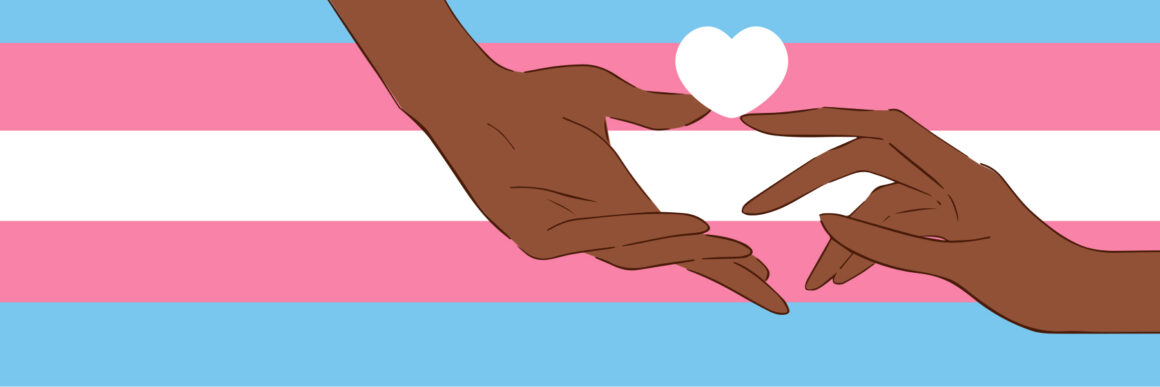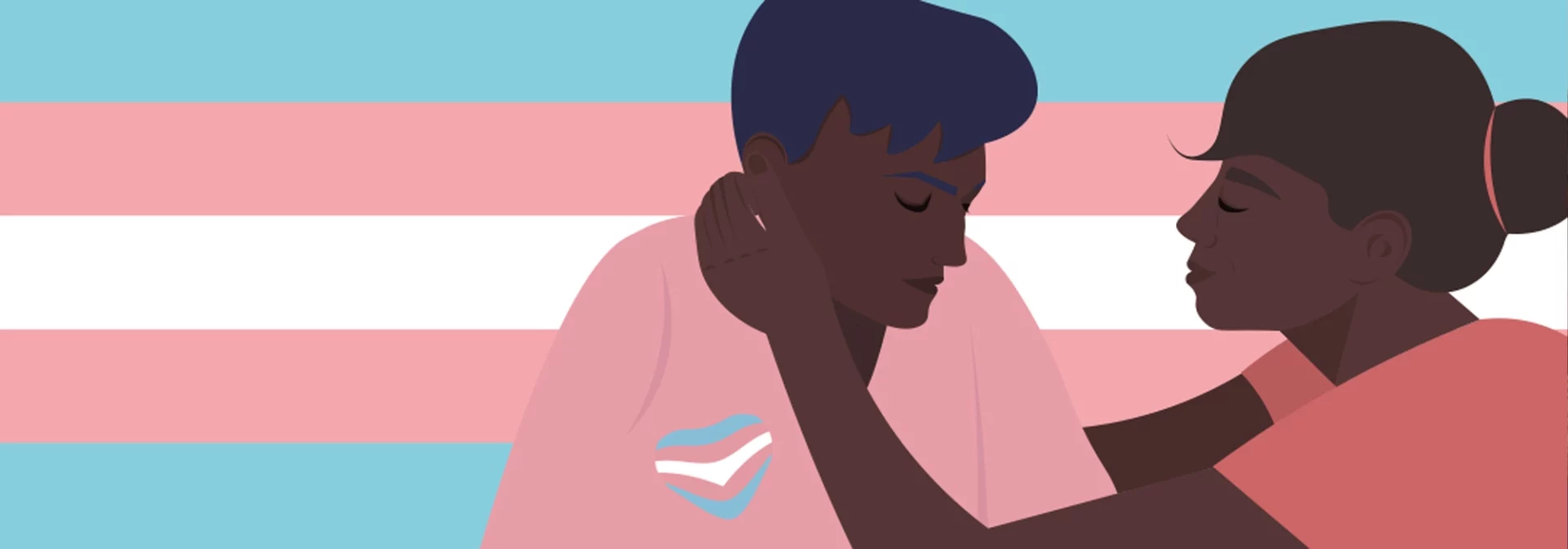An inclusive guide for caregivers to understand and support gender diversity.
Author Jen Bell | Reviewed by Mason Dunn
It’s normal for kids to explore gender as they grow up, and to be curious about — and push back on — cultural stereotypes about masculinity and femininity. It’s also common to engage in “gender-nonconforming” behavior, like preferring toys or clothes stereotypically associated with a different gender.
For some kids, these explorations are closely tied to their identity. They might feel like the labels “boy” and “girl” are too restrictive, or just don’t fit. They might feel that their internal experience doesn’t match the gender listed on their birth certificate. These feelings can be confusing and stressful, leading to anxiety, depression, loneliness and alienation.
If your child is questioning their gender identity or gender expression, they need your support. Taking a gender-affirming stance — treating your child in a way that reflects their experience and identity — is crucial.
What Does Transgender and Nonbinary Mean?
Gender diversity refers to all the identities and expressions that don’t fit within stereotypical understandings of male and female. When talking about gender diversity, it’s necessary to distinguish between gender identity, gender expression, and sexual orientation.
Gender identity is about internal experience — whether someone feels masculine, feminine, both, neither, or somewhere in-between. Gender expression is how that experience is reflected through clothes and hair, makeup, body language and speaking style, etc. Sexual orientation is about sexual and romantic attraction, and is separate from gender diversity. (Check out “Is My Kid LGBTQIA+?” for more on sexual orientation.)
BLOOM Note > We prefer to use the term gender diverse rather than just transgender or nonbinary. Gender identity is always evolving, and gender diversity is the umbrella term that best describes that.
Kids who are transgender identify as a gender different from the one listed on their birth certificate. Health professionals often use the phrase “consistent, insistent, and persistent” when talking about trans people — that the desire to be of a different gender is a powerful, ongoing, and long-lasting one.
Kids who are nonbinary don’t experience their gender as solidly masculine or feminine, but as somewhere in between, or both, or neither.
People might call themselves genderfluid (meaning their identity or expression changes), genderqueer, gender expansive, or gender nonconforming (all ways to describe identities or expressions that resist stereotypes). This language is constantly evolving and your teen might use terms that are unfamiliar to you; check out our glossary for more.
How to Support Your Transgender or Nonbinary Child
Sharing an evolving gender identity or expression is a huge and brave step for a preteen. The most important thing you can do is offer your unconditional love and support.
Talking About Your Teen’s Gender Identity Journey
- Express your love: “I’m listening, I accept you, and I support you. What do you need from me right now?”
- Be patient if they’re not ready yet: “Whenever you have any questions or want to talk more about this — I’m here.”
- Connect them with support groups or a licensed therapist: “Let’s find people for you to talk to who understand what you’re going through.”

Simple Ways to Support Transgender Kids
Affirm their gender: Use their preferred name and pronouns. Discuss any necessary changes at home, like new rules about privacy or new considerations within family dynamics.
Act as their advocate: Ask that others respect their identity. Call out transphobia. Encourage your child to set boundaries when necessary and stand up for themselves when it’s safe.
Get educated: Research gender-affirming care and treatments. Stay up to date on evolving language and terminology. Familiarize yourself with local and state trans rights laws.
Involve others: Find out how their school supports trans students. If they don’t, push for change. Do the same with your teen’s after-school activities, part-time job, or volunteering.

Ready to elevate your parenting? Become a member of the BLOOM family today!
Gain access to workshops, coaching, and a network of supportive parents. Don’t navigate this journey alone –
What Is Gender Dysphoria in Transgender Kids?
Identifying as transgender does not equate to a mental illness. But transgender people can experience severe and ongoing distress, known as “gender dysphoria,” related to the disconnect between the sex assigned to them at birth and their internal gender identity — for example, experiencing menstruation as a transgender youth.
It’s important to note that a medical diagnosis of gender dysphoria is often necessary before health insurance companies will cover gender-affirming care.
Gender-Affirming Care for Transgender Youth
Transgender and nonbinary people often choose to implement changes in their lives that align with their gender identity. This might be referred to as a “gender transition” or “gender affirmation.” It’s a personal and private journey that can look different for different people.
It may include:
- Social affirmation: Adopting gender-affirming pronouns, changing names, changing personal styles.
- Legal affirmation: Legally changing a name and gender marker on a birth certificate, driver’s license, etc.
- Medical affirmation: Using medication to slow puberty or allow those who have started puberty to develop different sex characteristics.
- Surgical affirmation: Undergoing surgery to modify physical characteristics. Surgery is permanent and mostly used with adults.
Mental Health Care for Nonbinary & Transgender Kids
If your teen is struggling with feelings of depression, anxiety, or isolation, they may need to see a licensed therapist. To find a counselor who specializes in gender diversity, check out the Human Rights Campaign’s map of gender clinics across the country.
Mental health care may be especially important for children who are neurodivergent — with diagnoses like autism spectrum disorder, learning differences, OCD, etc. — and children who have experienced discrimination.
Rates of suicide* and attempted suicide are much higher in trans teens than in gender-conforming youth. If your preteen or teen mentions any thoughts of suicide, take them seriously: Alert their doctor or a counselor immediately.
Research has shown that having one supportive person in a trans teen’s life will greatly reduce those risks, however. As a caregiver, you are that person. Your support is key.

Own Your Mistakes About Trans & Nonbinary Topics
It’s easy to get flustered when talking about gender diversity. You might feel intimidated by the evolving language, embarrassed that you don’t know the correct terms, or nervous about asking questions. That’s ok—and you’re not alone.
But don’t let any fears hinder your support. Avoiding the issue is worse than trying and making a mistake — and you will make mistakes. Just apologize, correct yourself, and move on. Showing your teen that you respect and support them is much more important than your pride.
When to Get Support
Understanding a child’s gender identity often means a lot of change at once—change that might be overwhelming for a parent or caregiver at first. Talking to a therapist or joining a support group can be invaluable.
This is especially important if you’re having difficulty accepting your child’s gender. While it’s completely natural to worry about your teen, that’s not an excuse to invalidate their identity or force them to present as their gender assigned at birth.
Ultimately, you want your child to be their happiest, most authentic self. Accompanying them on this journey of self-discovery is an honor—one that will bring you closer to understanding and lifting up who they truly are.
If you are still feeling overwhelmed, don’t worry! BLOOM is here to help. With our library of On-Demand Workshops with our trusted educators, to our Ask the Expert Forum & Live Events where you can get answers to your burning questions from our qualified professionals, to Supportive Community, where you can find strength in a community of other parents and caregivers, to Direct 1-on-1 Parent Coaching Support, we’ve got you. Raising tweens or teens is hard enough. BLOOM is here to make it a little easier.
*If you or someone you know needs help, call the National Suicide Prevention Lifeline at 988. You can also reach a crisis counselor by messaging the Crisis Text Line at 741741.
